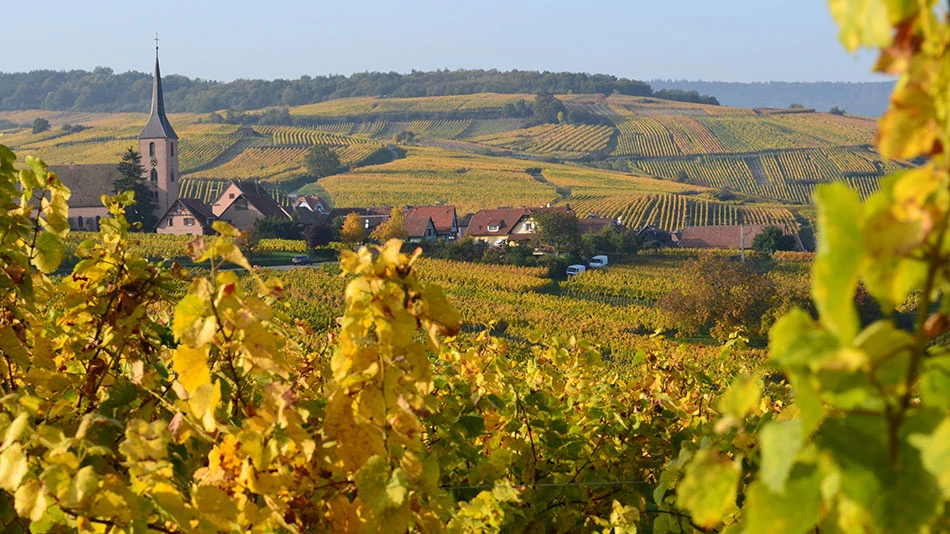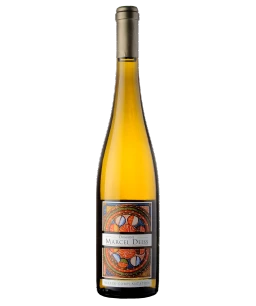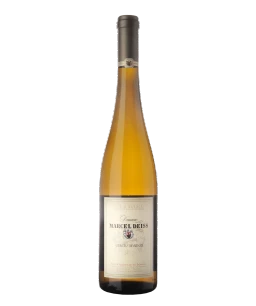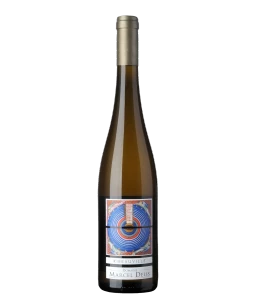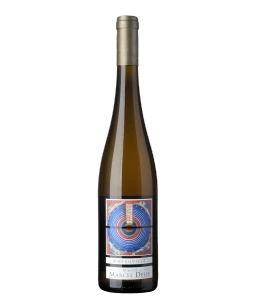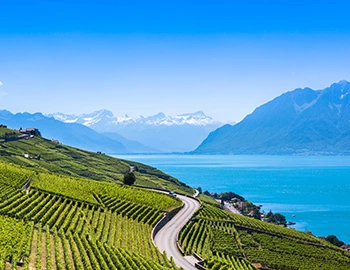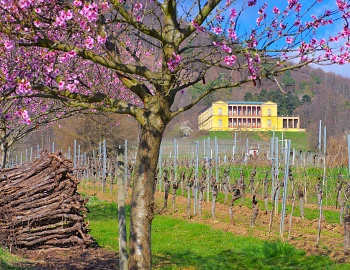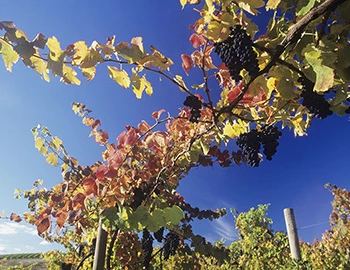Alsace
Alsace: diverse whites
The exceptional position of Alsace on the border of Germany has contributed to the fact that Alsatian wine culture contains both French and German elements. The range of grape varieties, unusual from a French perspective, is dominated by Gewürztraminer, Sylvaner and Pinot Blanc (Weissburgunder) –varieties all cultivated on the German side of the Rhine in Baden. According to the French tradition, the wines are cultivated and vinified such that they embody their respective terroirs.
White wines from Alsace
With its picturesque wine villages, dominated by half-timbered buildings, the idiosyncratic local German dialect and its hearty cuisine with dishes such as tourte (meat pie in puff pastry), choucroute with smoked meats and birewecke (sweet pear bread), Alsace is a popular destination for connoisseurs. It is no wonder that the scenery on the popular Weinstrasse in the summer months is reminiscent of a permanent open-air festival. Naturally, the top winemakers hone their premium crus away from this commotion.
Although Alsace (along with Champagne) is the northernmost winegrowing region in France, it is also its driest. The Vosges, on whose eastern foothills the Alsatian vineyards are nestled, form an extremely effective barrier against the humid air masses from the west. For this reason, just 500 millimetres of rain per year per square metre are registered. Because of the dryness and the warming climate in recent years, many Alsatian crus have perceptibly increased in fullness. In addition, many wines here have a certain pronounced residual sweetness. Nonetheless, many top producers here are holding back from their dry course.
Complex soil puzzle
Vines are rooted in a highly complex jigsaw of different soil types. At one time, the Vosges and the black forest were a single unit. As a result of flooding, erosion and folding, the middle part eventually sank, developing into the lowland through which the Rhine River flows today. Thanks to this sinking, the most diverse soil types have emerged on the western side of the valley. For this reason, Alsatian crus grow on volcanic soils as well as slate, limestone, gneiss, clay and sandstone. The great range of varieties means today’s vintners have something well-suited for each soil type. The growths with grand cru status –Riesling, Gewürztraminer, Muscat and Pinot Gris – carry particular prestige. Sylvaner also yields superb results, as do the sparkling Crémant wines, which are primarily vinified from Pinot Blanc grapes. Almost all producers here make top-class Spätlesen (Vendange Tardive) and noble sweet selections (Sélection de Grains Nobles).
51 Grands Crus
The grand cru classification was introduced in 1975, and has expanded since then in a targeted manner. Today, 51 sites in 47 localities hold grand cru status. Critics sometimes point to individual grand cru sites as being too large, and the permitted maximum yield of 7,000 litres per hectare having been set too high. However, the grand cru growths from renowned producers yield wonderfully expressive, multi-faceted wines which still have the requisite freshness.
